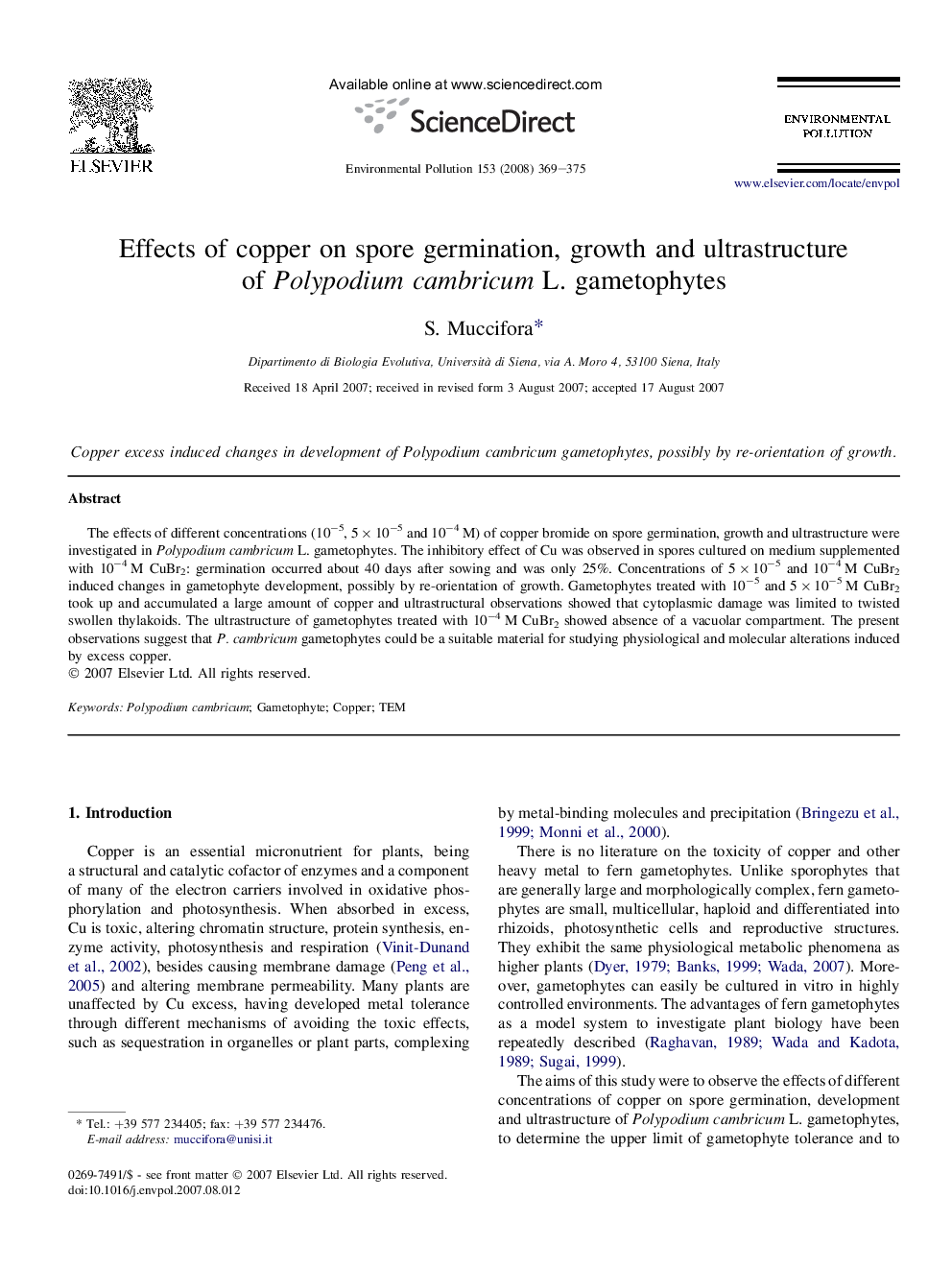| Article ID | Journal | Published Year | Pages | File Type |
|---|---|---|---|---|
| 4427111 | Environmental Pollution | 2008 | 7 Pages |
The effects of different concentrations (10−5, 5 × 10−5 and 10−4 M) of copper bromide on spore germination, growth and ultrastructure were investigated in Polypodium cambricum L. gametophytes. The inhibitory effect of Cu was observed in spores cultured on medium supplemented with 10−4 M CuBr2: germination occurred about 40 days after sowing and was only 25%. Concentrations of 5 × 10−5 and 10−4 M CuBr2 induced changes in gametophyte development, possibly by re-orientation of growth. Gametophytes treated with 10−5 and 5 × 10−5 M CuBr2 took up and accumulated a large amount of copper and ultrastructural observations showed that cytoplasmic damage was limited to twisted swollen thylakoids. The ultrastructure of gametophytes treated with 10−4 M CuBr2 showed absence of a vacuolar compartment. The present observations suggest that P. cambricum gametophytes could be a suitable material for studying physiological and molecular alterations induced by excess copper.
